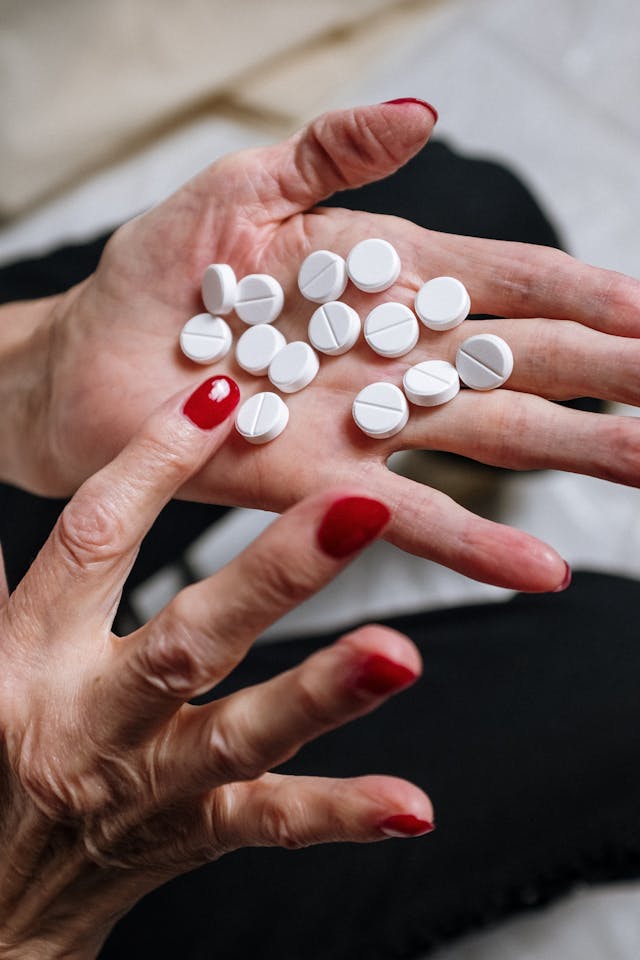Rheumatoid arthritis is a type of inflammatory disease that attacks joints mainly.
In the early stages of the disease while in progressive stages rheumatoid arthritis also affects some body organs such as skin, lungs, heart, and blood vessels.
Before we start mentioning the rheumatoid arthritis treatment we must know the cause of the disease.
Rheumatoid arthritis is an autoimmune disease so the main cause is an autoimmune disorder in your immunity system that attacks your body tissues instead of foreign body.
Rheumatoid Arthritis Symptoms
Pain and swelling in the affected joints.
Joint deformity and stiffness.
Bone erosion.
Fever andgeneral fatigue.
loss of appetite
Early-stage rheumatoid affects small joints - joints that join fingers to hand and toes to feet.
Progressive stage the rheumatoid spreads to the wrist, ankle, knee, elbow, and all body joints rheumatoid arthritis may affect some body organs and also attack the nervous system.
End-stage left joint deformity and loss of function.
So rheumatoid arthritis treatment in an earlier stage not only stops and delays disease progression but also can achieve complete recovery.
Now we show you the most important rheumatoid arthritis treatment plans.

1-Medical Rheumatoid Arthritis Treatment
NSAIDs
Nonsteroidal anti-inflammatory drugs act as an anti-inflammatory to relieve inflammation symptoms such as pain and swelling stiffness.
NSAIDs block the prostaglandin enzyme which is responsible for inflammation symptoms.
It is effective with mild cases while with moderate and severe cases we need combination therapy, there are many types of NSAIDs as :Ketoprofen, Diclofenac, Meloxicam, Etodolac, and anti cox2 as Celecoxib.
The dosage of NSAIDs is different according to its type your doctor will prescribe the most suitable type and dose according to the severity of your case.
How to use it?
This type of rheumatoid arthritis treatment is characterized by its different ways of application as it comes in the form of pills or tablets for oral administration.
Ampoules for injection, and cream or gel for topically applied on the affected joint.
NSAIDs side effects
Raise blood pressure, high risk of heart attack, gastritis, gastric ulcer, and nephritis.
DMARDs
Disease-modifying antirheumatic drugs DMARDs are the basic line of rheumatoid arthritis treatment that acts on the immune system.
To slow rheumatoid arthritis, DMARDs should be taken with NSAIDs even if symptoms are relieved.
They act on the immune system and that's why it can control disease decaying and slow rheumatoid arthritis.
DMARDs Types
There are two types of DMARDs biological and non-biological:
Biological
Abatacept, Belimumab, Ixekizumab, Rituximab, Sarilumab, Secukinumab, Tocilizumab, and Ustekinumab.
Non Biological
Hydroxychloroquine, Sulfasalazine, Methotrexate,Leflunomide, and Azathioprine.
How to use it?
DMARDs administration orally or subcutaneous injection.
Biological DMARDs are prescribed if non-biological ones have not been effective.
Methotrexate is the most effective and the first choice of DMARDs product as it has rapid action to reduce inflammatory symptoms and is easily administered also for its low cost.
Dosage is 12.5 -15 mg /week ( 4 - 6 ) weeks as the initial dose increases up to 20 mg for 3-6 months.
The maximum permissible dose is 25 mg /week.
Side effect
Hepatitis, Liver cirrhosis, oral ulcer, gastric upset, gastritis, and it can affect the weak immune system.
If you planning to give birth you should stop medication 3 months before.
Analgesic Pain Killer
Taken as combination therapy with NSAIDs, DMARDs as rheumatoid arthritis treatment protocol act as pain relief and improve symptoms and improve life until specialized medications improve the disease.
Paracetamol is the safest medicine, although it does not improve the disease, it reduces the feeling of pain.
Steroids
It is important in rheumatoid arthritis treatment as it acts as an anti-inflammatory and immune regulator, although it does not affect rheumatoid control.
It was one of the old treatment plans but now it is only prescribed for a short time in addition to DEMARDs to reduce pain sensation and other inflammatory signs.
Types
Prednisone, Prednisolone, Methylprednisolone, Dexamethasone, and Hydrocortisone.
How to use it?
Orally, topically, injection IV-IM, local injection into the joints.
The dose can be started at a higher dose of 15-20 mg /day and trapped per week till 10 mg /day.
Side effect
Gastrointestinal issues such as gastritis, bleeding, gastric ulcer.
Cardiovascular effects such as increased blood pressure.
Elevated blood glucose level.
Cataract.
Osteoporosis.
Increased mortality.
Although it is fast and powerful, it has toxicity side effects so it is prescribed for a short time only.
2. Surgical Interference
Recommended Interventional rheumatoid arthritis treatment in severe cases.
Examples of procedures used for rheumatoid arthritis treatment:
Joint replaced / hip-knee joints
Severe rheumatoid cases complain of complete joint deformity.
Carpal tunnel release
Surgery of carpal tunnel in your hand and arm.
Synovectomy
Remove synovium of fingers-wrist-knee-elbow-hip.
Tenosynovectomy
Remove tendons from the hand and wrist.
Tendon repair
Repair ruptured tendons from the hand, fingers, and knee.

3. Physical therapy
Physical therapy in rheumatoid arthritis treatment aims to keep moving.
It uses practice and other methods to stimulate muscles, bones, and joints.
Approved methods of physical therapy:
Massage therapy
Message to improve mobility and stiffness and can also reduce swelling of inflamed joints.
Electrical-stimulation
Electro-stimulation is used to relieve pain.
Transcutaneous electrical nerve stimulation (TENS) therapy is a commonly used method in rheumatoid arthritis treatment.
Therapeutic exercise
Muscle weakness in rheumatoid arthritis patients is caused by immobility.
Maintaining normal muscle strength is important not only for physical function but also for joint stability and prevention of traumatic injuries.
Exercise therapy has beneficial effects on increasing physical capacity to prevent joint deterioration.
Assistive devices and adaptive equipment
Improve the functional ability of the patient.
Assistive devices and adaptive equipment have beneficial effects on joint protection and improve mobility and reduce functional deficits, to reduce pain, also keep patients' independence and self-efficiency.
Loading over the hip joint may be reduced by 50% by holding a cane.
Hydrotherapy
Use this treatment plan to reduce pain and strengthen muscles.
It increases the pain thresholds at free nerve endings, relieving muscle spasms and stiffness by the effect of gamma muscle fibers, peripheral vasodilatation, and removal of painful mediators.
Also increasing acetylcholine release from the central nervous system through activation of the parasympathetic nervous system.
Cold/Hot applications
Called thermotherapy, uses cold application with acute stage use cold pack ice, and liquid nitrogen to reduce pain.
Hot application for stage chronic use hot pack, infrared radiation, and paraffin, to relieve inflammation symptoms and improve muscular stiffness.
Exercising
From the important item of rheumatoid arthritis treatment exercise improves blood circulation and can reduce muscle stiffness
Tell your coach that you have rheumatoid arthritis to advise you on a suitable exercise schedule.
4. Natural Remedies
Natural recipes also have an important role in rheumatoid arthritis treatment as;
Acupuncture
Acupuncture is the oldest Chinese pain treatment remedy by using a specific needle at the inflamed area.
Biofeedback
The technique teaches you how to control your response.
Massage
Reduce pain and improve muscles.
Heat and cold
Use hot water packs to improve stiffness and cold packs for acute pain.
Exercise
Swimming, walking. yoga strengthens your joints.
Deep breathing
Make your brain think away from pain.
Magnet
Magnet applications such as bracelets, necklaces, and pads improve joint pain.
Essential oils
Add essential oil during massage.
Susceptible People to Rheumatoid Arthritis
Women are more susceptible.
Elderly person.
Obese people.
Smokers.
Summary
Rheumatoid arthritis treatment plan is medical or non-medical.
Medical as NSAIDs, DMARDs, analgesics, steroids,
Non-medical as physical therapy, exercise, and natural remedies.
Rheumatoid arthritis is a chronic disease that takes a long time to manage and control.
Consult your doctor if you notice any one of the rheumatoid symptoms.
You must take into consideration that rheumatoid arthritis treatment in the early stage achieves complete recovery.


You must be logged in to post a comment.